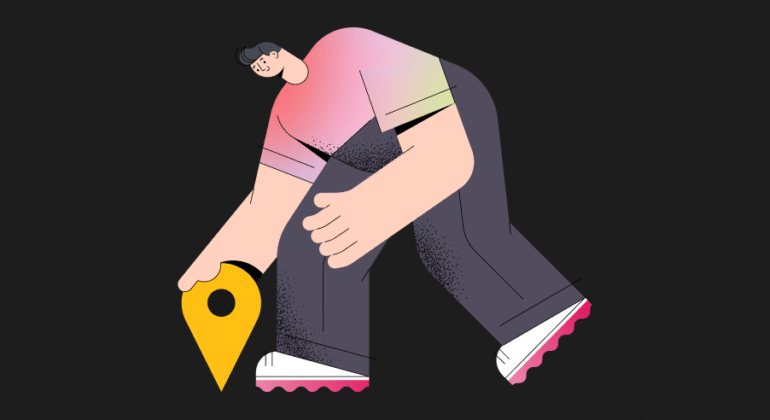
Let’s play a quick game of “Would You Rather”:
Would you rather:
A) Road-trip across the country with a clear route, snacks, playlists, and zero confusion
or
B) Just wing it, miss all the scenic spots, and end up in a ditch arguing over gas station directions?
Exactly. Building a digital product without a product design roadmap is basically option B, but with more Slack threads and passive-aggressive feedback.
In this blog, we’re unpacking why a good ol’ product design strategy (the fun kind, not the 40-slide-deck kind) is the secret sauce behind every product that doesn’t flop.
CONTENT
Wait, What Even Is a Product Design Roadmap?
Imagine if your idea, design, and dev timelines all swiped right on each other and started planning their future together. That’s a product design roadmap, your project’s Tinder match made in heaven.
It’s a clear, visual plan that maps out your product’s entire journey: from those early brainstorms to polished pixels in users’ hands. It aligns everyone: founders, designers, devs, and your one friend who always “has thoughts.”
It’s part strategy, part schedule, part reality check.
And yes, it’s essential.
Why You Absolutely Need One (No, Manifesting Alone Won’t Cut It)
Here’s what a solid digital product roadmap helps with:
1. It keeps your team on the same page (and planet)
Without it, designers start designing Mars while devs build for Jupiter. A roadmap says:
“Hey fam, this is the plan. Let’s build Earth first.”
2. It gives structure to chaos
A good product design workflow organizes all the madness like user research, wireframes, UI magic, testing loops into a system that doesn’t make you want to scream into a Figma file.
3. It protects your UX from becoming an afterthought
We’ve seen it too many times: people rush features, then wonder why the UX feels like an escape room. A proper UX design roadmap keeps user experience front and center, always.
4. It saves time, money, and grey hairs
By planning things smartly, you cut down on wasted sprints, random pivots, and rework that burns cash and morale.
5. It makes you look so much more put together
Investors, stakeholders, and even your own team will trust you more when you’ve got a clear, visual plan. Not just vibes and a prototype.
So… What Goes Into a Product Design Roadmap?
Let’s peek under the hood of a well-oiled UI UX roadmap:
Discovery & Research
Before you build, you gotta listen. User interviews, market research, competitor snooping aka, detective mode.
Define the Problem & Goals
If you can’t say what you’re solving in one sentence, go back to the drawing board. Clarity is queen.
Design Thinking Process
Empathize → Define → Ideate → Prototype → Test. (This isn’t just a trendy mural in your co-working space. It works.)
Timeline with Milestones
When are you designing? Testing? Crying over unexpected scope creep? Map it all out. Be honest.
Feedback Loops & Iteration Windows
A good agile design roadmap includes space to pivot when users inevitably do something weird.
Team Roles & Handovers
Who’s doing what, and when? This avoids the “I thought you were doing it” conversations.
What Happens Without One? (A Mini-Rant)
Without a product roadmap design in place, you’re asking for:
- Features no one asked for (but someone’s cousin insisted on)
- Endless revisions because “the brief wasn’t clear”
- A dev team building in the dark
- UX that feels like a 2012 Tumblr theme
- Launch delays that age you in dog years
No one wants that.
Actionable Tips for Building Your Roadmap Without Losing Your Mind
- Start with Why
Clarify the product’s purpose before you obsess over fonts. - Involve Everyone Early
Designers, devs, stakeholders, the intern with sharp UX instincts. Get them in the loop. - Break Big Goals Into Smaller Chunks
“Launch MVP” is not a task. “Finish mobile onboarding flow” is. - Visualize It
Use tools like Miro, Figma, Notion, or whatever helps you see the roadmap, not just talk about it. - Review It Weekly-ish
Things will change. Keep your roadmap alive, not laminated.
Real Talk: Roadmaps Don’t Kill Creativity, They Protect It
Some folks think planning equals rigidity. But here’s the truth:
A product development roadmap gives your creativity boundaries, not chains.
You’re not killing spontaneity. You’re protecting your time and ideas from the corporate Bermuda Triangle (aka unclear scope, shifting priorities, and “Can we just add one more feature?”).
Think of it as setting the rules so you can break them strategically, not chaotically.
TL;DR for the Scroll-Lazy (We See You)
- A product design roadmap is your GPS, hype crew, and strategy doc rolled into one.
- It helps align teams, avoid chaos, and deliver designs users actually want.
- Without it, you’re basically freestyling a musical with no script.
- Build it early. Update it often. Use it wisely.
Ready to Chart Your Roadmap Like a Pro?
At Flight Mode Studio, we eat product design strategy for breakfast (with oat milk, obviously). Whether you’re lost in idea-land or deep into dev drama, we’ll help map your vision into something pixel-perfect and launch-ready.
